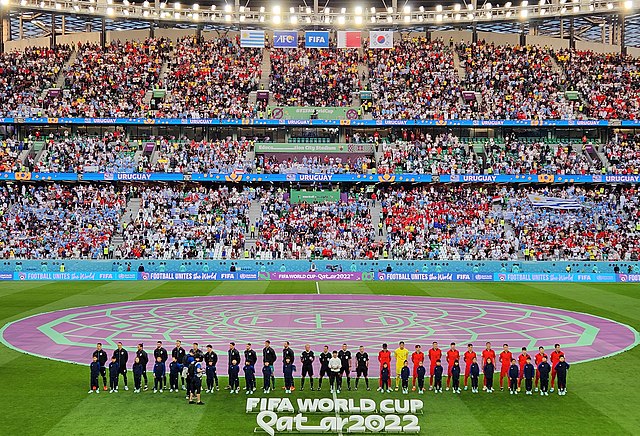OPINION: Is 2022 the most accessible World Cup ever?
Photo of Lusail Stadium, a 2022 World Cup stadium in Qatar, courtesy of Wikimedia Commons.
Marly McNulty | Contributing Writer
Throughout our history, people from all over the world have enjoyed coming together to watch sporting events. Whether it be college or professional, men’s or women’s, basketball or hockey, people love the act of getting together to watch their favorite team take on another team.
Sports allow individuals to escape their troubles and problems in the real world and just focus on the game at hand. You would think that sporting events have the power to be enjoyed by all, but that is not always the case.
Individuals with disabilities have trouble attending sporting events, as stadiums can be challenging for those with disabilities due to the lack of accessibility. Not to mention, stadiums are loud and filled with people, which can be another setback.
I have experienced the struggles of maneuvering my way through a stadium with an injury firsthand, and it is not a comfortable situation. While not disabled, I attended a St. Louis Blues hockey game this past March directly after having knee surgery. I was on crutches and had very limited mobility.
Parking further away, I knew the game would be a struggle, and it only got worse as I entered the building. No one was there to help as I took multiple flights of stairs on my own. I stood anxiously in a loud arena receiving judgmental stares from those around me because I couldn’t walk and looked different than everyone else.
This allowed me to see a different perspective in life and made me think about how those with a mobility disability must feel every day, especially when trying to enjoy something fun such as a Blues game.
This year, the 2022 World Cup is trying to alter these negative experiences for those with disabilities by making the stadiums more accessible. The World Cup is currently taking place in Qatar, and there are 32 different countries playing, all fighting aggressively for the World Cup.
The people in Qatar have worked many hours altering and modifying their stadiums to make fans feel more comfortable. Individuals with wheelchairs now have seats from different vantage points found in multiple places around the stadiums, deferring from what used to be an isolated, low-level disabled seating area.
The stadiums also have sensory rooms for those specifically with disabilities such as Autism, to remove the stresses and triggers that the loud noise and big crowds can cause. This development is said to be the largest development for sensory rooms in sporting history.
While these advances are mild, they have a large impact on those with disabilities, allowing them to be more involved in the sports nation. I am beyond thrilled that this World Cup is said to be the most accessible ever, showing that we are making improvements and advances to become an all-inclusive society.
I value and respect the World Cup for making these huge changes and advantages in their stadiums’ set-up. Individuals with disabilities are now included more than ever and get to enjoy the game without the stresses a disability can cause.
I hope other countries, more specifically the U.S., see these positive changes and alterations and consider bringing them to the U.S. to make sporting events more accessible and welcoming for all.
For more opinion pieces, like Flyer News on Facebook and follow us on Twitter (@FlyerNews) and Instagram (@flyernews).

